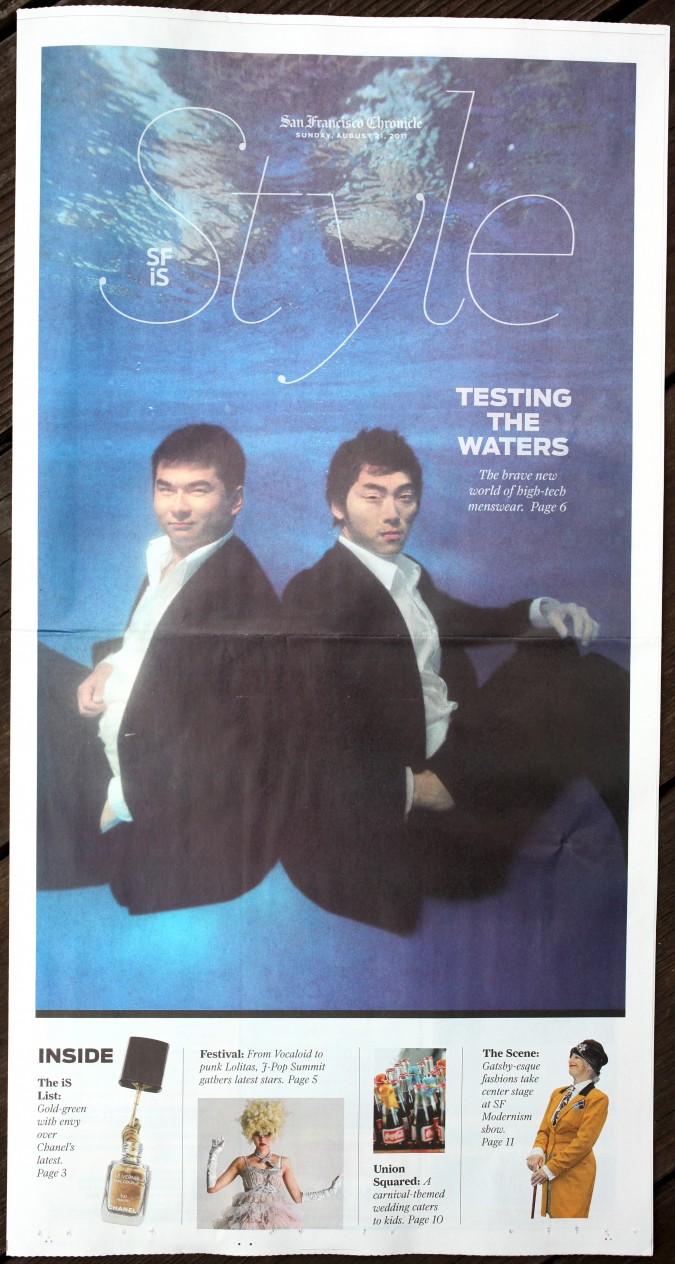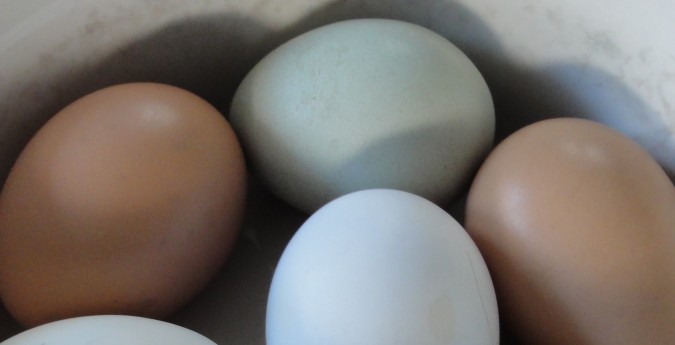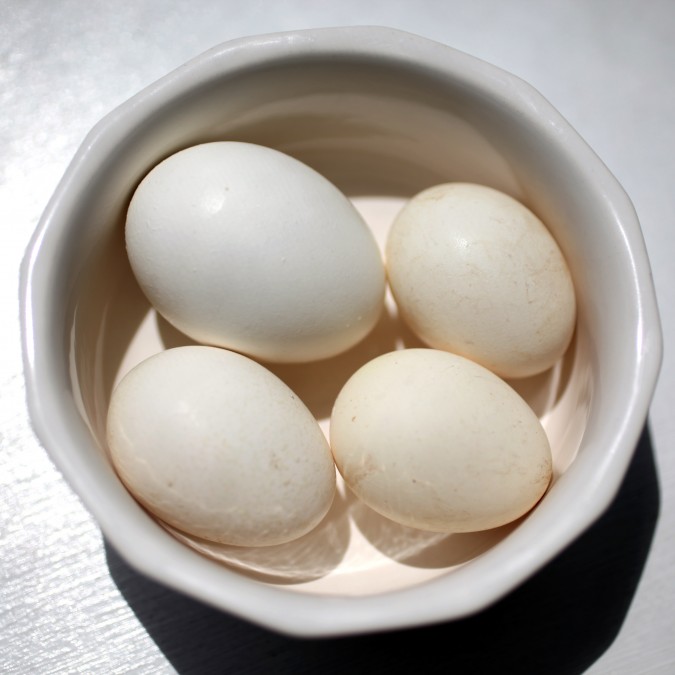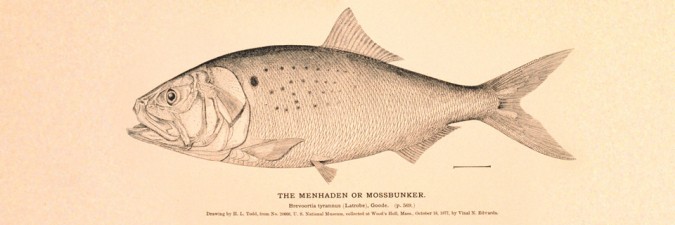Archive for 2011
One of my chickens is gone!
I am heartbroken.
Just a couple of days ago I started to let my chickens out of their large 4 x 10 foot covered home so they could roam and peck in my big backyard. That was a bad decision.
Today, around noon, in full sun, one of my chickens disappeared. I was in earshot the whole time, working on the computer. I didn’t hear anything out of the ordinary.
I suspect that a hawk soared in and grabbed my smallest chicken. I think this chicken was a rooster, so he would have had to leave soon anyway. This is not the way I wanted him to leave!
The remaining hens were subdued and all of them even let me pet them. Normally only my Hudan hen allows me to pet her or hold her with just one hand. The other ones scurry away when you try to pet them. I can still catch them. But today, after this sad event, all three let me hold and pet them without objection. They really seemed shaken.
These chickens spent every second together since birth, so this must be so traumatic for them. I don’t see how they didn’t witness their friend being carried away.
I feel so foolish because I saw a hawk just a few days ago flying toward the coop. I didn’t know what a hawk looked like. I thought what I saw was an owl, and that it would not bother my chickens. I described what I saw to my father, and he said I had seen a red tailed hawk. He said he has them by his house, which is just minutes by car from my house. My father grew up on a farm, so he knows a lot more about this kind of thing than I do.
I don’t even have a recent picture of the lost chicken, and I’m a photographer!
Naked Suits in Style
Today a company I’m friends with got some great publicity on the cover of the Style section in the San Francisco Chronicle, the primary paper and online newspaper for San Francisco, California USA.
I’ve written about Naked Suits before, soon after I attended their unveiling party on June 25, 2011.
I first met the founders Albert Shyy and Ming Chang in June 2011 when I was a final round judge for the Made for China Entrepreneurial Pitch Competition and Startup Fair at University of California at Berkeley.
I don’t buy newspapers anymore, but I made an exception today because I wanted to have a copy for my library. I snapped two pictures of the article so you can see exactly how great the coverage was. Yes, an underwater Shyy and Chang fill up nearly the entire front page of the Style section.
Congratulations to the outstanding and friendly team behind Naked Suits. I’ve been friends on Facebook with some of the team members, and they are living fascinating lives from what I can glean from their status updates.
It must really be exciting to work at Naked Suits with all that’s happening so quickly.
I encourage you to read the story at the Chronicle website, but if you find that link no longer works, you can click on the photos here to enlarge them, and you may find you can read the tiny text successfully.
My backyard chickens are producing two eggs a day
My San Francisco hens are producing two small eggs per day, both of them white in color. One of my chickens is supposed to produce green or blue eggs. I am looking forward to making green eggs and ham!
Until my grandmother Elsie Battaglia showed me actual green eggs a few years ago, I didn’t know they existed. I thought the famous book by Theodor Seuss Geisel just had a funny title.
My bus conversion electrical systems are now solar powered
Over the weekend I installed and connected my second solar panel system on my RTS bus conversion. Now the starting batteries will be kept fully charged even if I don’t start the vehicle frequently, which is currently the case since I’m working on it on weekends and never taking trips.
Since I only drive it a block or two at a time, to move it to the other side of the street for street cleaning, the batteries have discharged several times this year. Since buses have 24 volt starting systems, I can’t get a jump start from my car or a regular tow truck.
What I have to do is take out the 4 batteries and take them home, where I charge them individually on a 12 volt charger. This takes about a full day to accomplish, including charging through the night. I have to wake up once to switch the charger to the next battery. This has happened enough times that I finally climbed up on the bus conversion roof and bolted my set of two 12 volt Uni-Solar 20 watt panels and wired them in series to get 24 volts.
I then ran the wires through the roof and down to a 24 volt Xantrex C35 solar charge controller, which was connected through a fuse to the starting battery cut off switch in the dedicated battery bay in front of the rear wheels.
Everything worked perfectly the first time I switched on the batteries.
It’s hard on batteries to let them discharge to the point they won’t start the vehicle. Keeping the batteries fully charged will certainly make the batteries last longer. I don’t understand why all vehicles don’t incorporate small solar panels to keep the battery charged during periods of non use. You can get small battery maintainer systems for around USD $25.00, and if they were built in, I can see the price dropping by half.
Would you pay USD $12.50 more for a car that would not be stranded if you don’t drive it for a few months? The tow truck operators might not like it, but I think it’s a good idea. Excess solar power could be used to drive a tiny fan to keep the passenger compartment cooler. This would result in less petroleum fuel being used to run the air conditioner on high to cool down an interior that might reach 140 degrees F sitting in the hot sun in the summer. Fewer batteries being discarded prematurely plus lower air conditioning costs? Seems like that would be well worth an extra USD $12.50 per vehicle.
I will be at the 2011 Intel Developer Forum
I am attending the 2011 Intel Developer Forum on Tuesday, September 13, 2011.
Intel Capital graciously gave me a third free pass, since my company Silveroffice, Inc. is an Intel Capital Portfolio Company. It’s a great perk, since the super saver least cost ticket is USD $595 per day. The full three day least cost ticket is USD $1,395, but even if that were also complimentary I wouldn’t attend for three days. Intel puts on great events, but my company is not involved with computer hardware, so it’s frankly of limited value for me to even attend for one day. But I always learn something, even if a lot of the presentations are over my head.
I get a free laptop backpack each year, and I use the latest one all the time, as it’s actually padded and of high quality.
I like the networking and the keynotes.
Intel CEO Paul Otellini speaks at the keynote, and I enjoy his presentations. Intel is really working hard on impressive projects, and I don’t think people appreciate how big and important a company Intel has become. To my knowledge, their Intel Capital venture arm remains the biggest venture capital firm in the world.
In 2009 I saw 3D television before it hit the market, thanks to outstanding presentations at the 2009 Intel Capital CEO Summit.
Thanks to Intel, I’ve had dinner with musician and entrepreneur MC Hammer and lunch with the original Java product manager Kim Polese.
Thank you Intel!
No more Bank of America deposit accounts
I first got a Bank of America checking account in 1989 when they offered a one day promotion of a no cost checking account for three years. Back then, free checking was not common, so I marked the date in my calendar and visited the 9th Avenue and Irving Street branch on the special day. I still have that calendar, which I recently reviewed since I’m typing my 1976 diary to post to this blog.
My wise filmmaker girlfriend I wrote about last week warned me that Bank of America was not a company I should be doing business with. Sadly, I ignored her advice and went on to endure over 20 years of mediocre and often frustrating interactions.
Today I closed the last of my deposit accounts with Bank of America. I moved my corporate checking account to San Francisco Fire Credit Union, which is the best financial institution I’ve ever dealt with.
As an example of how extraordinary this credit union is, consider that when I sent a message to Darren Herrmann, President and CEO, via a box on the front page of their website, Herrmann called me on the phone 15 minutes later to thank me for my message. Even though this is a small credit union, not a big bank, I was and remain impressed.
I am not and have never been a fire fighter. Anyone who works or lives in San Francisco is eligible to join.
Cooking chicken eggs from my urban homestead for the first time
This morning I fried 3 of the 7 eggs my backyard chickens have produced since August 12, 2011 for my urban homesteading household.
I live right in the center of bustling San Francisco, California USA, so this is particularly exciting. A couple of years ago I had no idea I would be farming! My cousin Cindy Christensen owns a farm, and I’ve marveled at her wide array of award winning show chickens she raises. But even when I was visiting her farm, I never considered that I would one day soon be feeding chickens and collecting eggs each morning.
The eggs my chickens have produced so far are smaller than the smallest eggs for sale at any grocery store I’ve visited.
I shot the video of me cracking these first eggs into a stainless steel pan so the background would be a light color. Normally I wouldn’t fry eggs in this pan.
Maybe it was the excitement of raising these chickens from when they were just 3 days old, but these fried eggs were the best I’ve had.
Have a look at how orange the yoke in the upper left is. I was expecting all the eggs to have yokes that color. Food writer extraordinaire Michael Pollan educated me through his book The Omnivore’s Dilemma that good eggs should have orange yokes, not yellow yokes. I am now a believer and I am certain I can taste the difference.
I shot the video above in full 1920 x 780 high definition video on my Canon EOS 5D Mark II camera.
Important fish overused to make pet food, paint and cosmetics
Until I read The Most Important Fish in the Sea, I had never heard of Menhaden.
Apparently Menhaden are the most important fish in the sea.
As you might predict, Menhaden are in trouble from overfishing.
Humans don’t generally currently eat menhaden, but other fish do.
The oceans need Menhaden to clean the water. According to the article:
Some scientists believe that menhaden could be a partial solution to pollution and the oxygen-depleted areas of water called, bluntly, “dead zones.” In these zones, pollution-related algae blooms use up the oxygen in the water, making it difficult for other species to live; it’s a particular problem in estuaries like the Chesapeake Bay and the Long Island Sound, where menhaden were once plentiful. Menhaden are filter feeders, swimming with their mouths open and straining phytoplankton (algae) and other particles with their gills. While the exact content of what menhaden filter varies by location and season, it is clear that menhaden have been removing damaging particles from our waters since time immemorial.
“Menhaden are the main herbivore in the ocean that eat phytoplankton, and without them, we have a problem,” says Bill Goldsborough, senior scientist at the Chesapeake Bay Foundation.
Menhaden are oily, so commercial enterprises use their extracted oil to manufacture fish oil, paint and cosmetics.
According to the article I cite, Omega Protein is the sole company that fishes for Menhaden on the East coast of the United States. Its projected 2011 sales of USD $218 million is enough for them to be a powerful influence on legislatures in the state of Virginia. Virginia is the only East coast state that allows the vast commercial harvesting of Menhaden practiced by Omega Protein.
I know next to nothing about the fishing industry, but it strikes me as lunacy to possible seriously damage the sea for a paltry $218 million dollars of revenue a year. While I’m sure it seems like a lot of money to Omega Protein, it’s a tiny and trivial amount of money in the overall scheme of things. If the article I linked to is telling the full and correct story, the owners at Omega Protein should switch gears and find something else to do to make money.
On the front page of the Omega Protein website I found the following text:
More than ingredients. Ingenuity.
One small fish improves the health of animals, humans and plants. One small fish meets the nutritional needs of an industry. Who could have imagined it? Omega Protein did. For the last century, we have processed every usable aspect of that small fish to provide the industry with powerful nutritional ingredients. And while we didn’t set out to become the world’s largest producer of omega-3 fish oil and North America’s largest manufacturer of protein-rich fishmeal and organic fish solubles, we ended up doing just that. Fish by fish.
By their own admission Omega Protein didn’t set out to do what they’re doing. Now would be a great time to pursue whatever else it was they set out to do, so that they can allow the Menhaden to recover and get back to work feeding other marine life and cleaning up the water for all.
This article also appears on Grist, a website I like because they have linked to this blog from their front page.
My San Francisco chickens started producing eggs
I got my first eggs from my urban homestead chickens yesterday!
The eggs are smaller than I’ve ever seen in a store, but they look pretty good for their first attempt. I was shocked to find two on the same day, since I think that means two chickens each laid an egg. I’ve read chickens rarely lay more than one egg per day. That’s why I suspect two chickens chose the same day to begin production.
I have four chickens altogether, but I fear one is a rooster and will soon have to go live with my friend Fara Otterbeck who owns a farm in Napa, California USA and is in need of a rooster, thank goodness. Roosters aren’t allowed in San Francisco. I don’t know for certain if I have a rooster because he hasn’t started crowing yet.
Each chicken has eaten about 50 pounds of food since birth. Organic chicken feed costs USD $20 per 50 pound bag provided you buy it at a feed store and not a pet store.
I have a feeling these eggs are going to be costly like the ones I buy for USD $8.50 a dozen at Rainbow Grocery, but that’s alright. I love having chickens here, and they make me happy.
Raising a family in a 1928 automobile while driving 145,000 miles on secondary roads
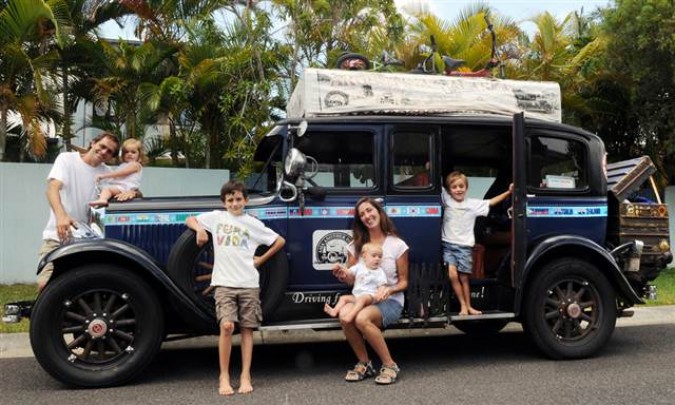
Herman and Candelaria Zapp with their children, from left: Paloma, 3; Pampa, 8; Wallaby, 1; and Tehue, 5.
I have written about my dream of traveling the world in my bus conversion to promote green living. That might seem a contradiction since such a large vehicle uses a lot of fuel to move. But the dwelling part of the vehicle will likely be the most efficient home many people will have ever seen. I think it’s a fair trade off to burn some fuel to spread the word about how little fuel one can use to live day to day.
Even people who travel the world by plane to spread the word about green living burn a lot of fuel to move those planes around the world.
On a per pound basis, my bus conversion is a lot more efficient than a Toyota Prius. I get 11 miles per gallon on the freeway in my conversion, and the vehicle weighs 28,000 pounds. That is outstanding compared to a set of Prius cars that weigh the same.
Today I want to share a story of an inspirational family lead by Cadelaria and Herman Zapp, pictured above with their four children.
This is not the more famous Hermann Zapf, the legendary typeface designer that created the fluid and beautiful Zapfino font script font.
The Zapp family is traveling the world in a 1928 Detroit-made Graham Paige Model 610 automobile. Herman and Cadelaria started their trip 11 years ago before they had children. They had 4 children during their travels, with each child born in a different country. The map above shows almost the first four years of their travels, which started January 25, 2000. That trip was a mere 43,717 miles long.
So far the Zapps have traveled over 145,000 miles, all on secondary roads as their car is not freeway capable since its top speed is just 40 miles per hour.
The family has made thousands of friends along the way. I just sent a Facebook friend request to Herman Zapp, where he already has 4,671 friends.
The Zapp family includes Herman Zapp, Candelaria Zapp, Paloma Zapp, Pampa Zapp, Wallaby Zapp and Tehue Zapp.
The friends the Zapps make are crucial to the success of their adventure. When their car broke down in Puebla, Mexico, a new friend they made showed them to a nearby car museum. The staff at the museum disassembled one of their cars on display and gave the Zapps the replacement part they needed for their car. That’s right — the museum ruined one of their cars to keep the Zapp’s car on the road. That’s an extraordinary story of kindness.
I would love to meet a woman interested in going on such an adventure with me in my bus conversion. I can easily imagine homeschooling any resulting children and blogging daily about our adventures. I like to write, and I can see writing books about our travels and selling them online, as the Zapps do to make money. I’m a pretty good photographer so I could illustrate the blog and book with thousands of images. Who knows, maybe I might even make some stock photo or stock video income, since I also shoot video.
I plan to grow vegetables and raise fish, chickens and quail on my bus conversion. This may sound crazy, but I’m already growing vegetables and raising fish and chickens in my backyard, and it’s not that difficult. I see no reason except for possible agriculture laws in some locales to keep me from becoming partly food independent during my travels.
The Zapp’s 2007 book about their travels is called Spark Your Dream. As of today it has 30 five star reviews on Amazon. It has 2 four star reviews and zero reviews with fewer than four stars. It promises to be a good book, and I plan to check it out of my library if it’s available.
The Zapp’s have been featured in many newspapers along the way, including on the front page of some. Their website has a great section that shows off scans of the actual papers, most of them not written in English. I have a hard time reading the scans since they’re not at high resolution. I hope they find this blog and rescan the articles at a higher resolution so one can blow them up to read them directly. Right now you can blow them up but they’re fuzzy.
Another recommendation I have for the Zapps is they should post all their photographs at much, much higher resolution. Most of their pictures are tiny. Since what they are doing is so newsworthy, they should make it easy for printed media to publish their travel pictures. A magazine can’t use the tiny pictures the Zapps have on their site currently. I suggest nothing less than 6 megapixels or so.
My brother Andrew Warnock and his wife Krista Warnock homeschool their children. Their kids are the best behaved and most inquisitive I know. Granted, I know few young children, but from my perspective their home schooling is a complete success.
I hope to meet the Zapps one day, and in the meantime, get to know them via Facebook and their website, which is also available in Spanish.
And as for any plans of stopping – “We have driven almost the distance to The Moon from Earth and we aim to keep going,” Mr. Zapp said.
